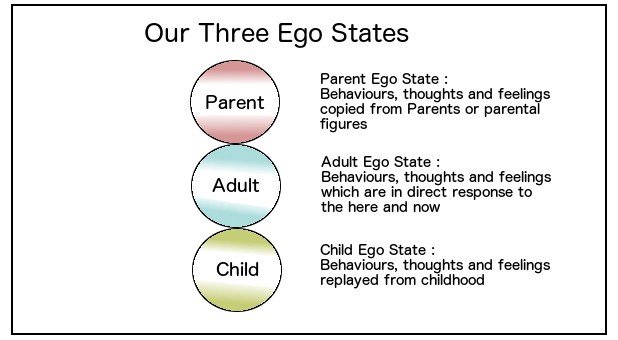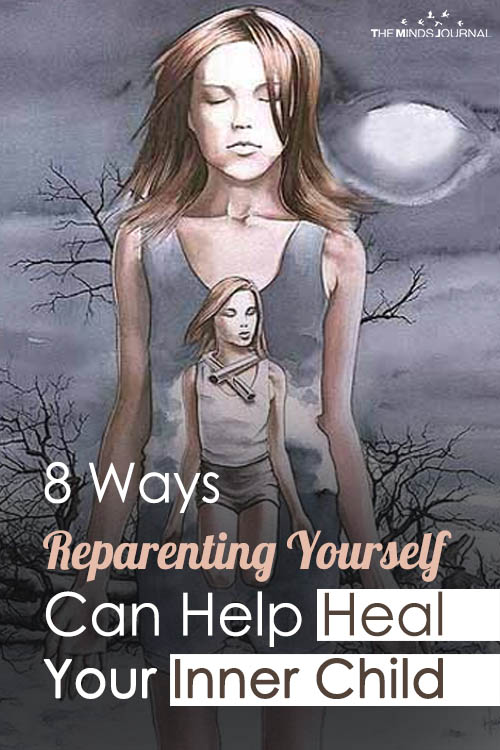Do you want to heal, but don’t know how? Then it’s time for reparenting yourself to heal your inner child.
Quite recently I was reading up on inner child work and across the many Googling sessions, over one, I found a quote by the famous American TV personality Fred Rogers :
As might be your guess already, I was taken in by the use of the word “still” – to mean something that continues to “be” and also to mean the two-sided sense of rest and restlessness.
Personally, I spent a good chunk of my 20s, looking squarely at patterns and attitudes that I may have inherited from my family of origin. Some contemplations brought me relief and some plunged me into depths of despair. Some of it I was fortunate to work through in therapy and some of it stayed with me, glued even when I wanted to shake it all off.
Mostly the state of being where I felt that my identity was steeped in my wounds, that I needed someone else to hand-hold me through the process.
You’d be absolutely right to think that the psychotherapeutic principles of reparenting are helpful.
Some people undergo total regression, a derivative from transactional analysis, and find relief. Then there’s spot reparenting and time-limited reparenting, each of which in some form revolves around the therapist assuming the role of the “ideal parent”.
Read Reparenting: 3 Ways To Heal your Inner child
Transactional Analysis
I learnt through the process of Transactional Analysis that we have three sides or ‘ego-states’ to our ‘personality (Parent, Adult and Child), and that these ego states converse with one another in ‘transactions’ both internally and externally with other people (hence the name).
This helped me gain an insight into my inner world and the mechanisms of its functions.

This enables the client’s child ego state to be healed, as the client engages with their therapist. The subtle role modelling also allows the client’s parental ego state to absorb new information and new behavior.
In my own therapeutic journey, I did undergo a phase of such reparenting, taking cues and hints and constantly checking in with my own process of unfolding.
The exemplification made it possible for me to believe there are other ways of handling conflict, abuse and powerlessness. However, self-reparenting is what finally came to my aid, as I saw my own struggle to emerge from past hurts.
“Why self-reparenting?” you may ask.
Well, here’s how my healing process progressed because of self-reparenting.
1. SELF-SUFFICIENCY
Once I had seen in therapy what it meant to open up from my own place of truth, be heard and be received unconditionally, I saw how my “inner parent” had to become more self-sufficient.
It is true that the initial phase of role modelling in therapy was helpful, but if I lingered there, it may have turned out differently. To have your parent ego state transform is a process in itself.
It might feel clunky at the outset and even so unfamiliar that you might want to abandon the process, and let it rest “in the hands of the universe”. I would only say, give it time. I have seen it for myself that the damage takes years to develop. How then do you expect its repercussions to just fade away at the snap of a finger? Keep steadily at it and trust yourself.
Read Reasons Why Healing your Inner Child is Crucial for Self-Growth
2. MANIFESTED REALITY
Reparenting is a method of re-conditioning. The process or reparenting yourself makes way for new connections to develop and new patterns to replace the old.
Self-reparenting takes it a step further. When you make space for your inner parent to grow more present and compassionate, healing manifests in the everyday scheme of things.
In my case, I observed that I had become less critical, less worried and less judgmental. This also altered my communication with people around me, making me clearer about my own boundaries and how I would relay that to the other in interaction.
3. OBJECTIVE DISTANCE
The process of coming into your own in terms of your inner parent ego state, can slowly bring in healthy distance from wounding events. The reason I use “objective” is to be able to justify that space that gets created between the memory and your present state, allowing you to witness the past without necessarily having to retraumatise yourself.
Self-reparenting helped me make connections between the past and the present with what I would call non-attachment and retrospection.
So now that you have some idea of what reparenting yourself might look like, it might be useful to know what you can practice as part of the process.
4. AWAKEN THE VOICE OF CURIOSITY
Reparenting yourself requires curiosity. With therapy giving me an understanding of the world of possibilities that can exist in a given situation, I began to look at what hurts from a place of curiosity.
At the outset, the voice was insistent and oppressive. But the more time I allowed, it turned lighter and more genuinely inquisitive.
“Do you know what would make you feel better?”
“Can you see how these words make you feel?” etc. are the kind of questions I began to use as my internal compass.
5. BE PATIENT
Reparenting yourself requires patience! Anyone who has seen drastic shifts in their life or has tuned into their self-awareness acutely will tell you how difficult change can be. The path from unfamiliar to familiar comes fraught with slowness and setbacks.
So, be prepared to spend months or even years allowing the inner ideal parent to bloom, to talk kindly, to listen, and to be there when you’re in crisis. To be patient is a commitment I had made to myself and I am sure it can be of help to you too.
Read 5 Signs To Know If You Need Emotional Healing
6. ACCEPT VULNERABILITY
The journey of healing through reparenting yourself isn’t easy to begin with. In my case, I noticed my own resistance to feeling anything else other than what I had allowed myself to feel, over time. If anger had been a go-to emotion, without it I felt helpless and lost.
However, with some patience and contemplation, I found that it was exactly this sense of being lost that I had to welcome. I was losing old ways of working and this meant I had to embrace newness, however odd it seemed. Accept vulnerability for reparenting yourself and healing your inner child.
7. CREATE ROUTINE
The quiet, internal change between old and new can feel strange. I remember wondering if from a place of wounding I was going into a place of disconnection. Yes, that’s how it felt, especially because I was not able to work through every bit of it, with and without my therapist’s help.
This is when it occurred to me that creating structures around me that would feel nourishing and helpful, could be one of the answers. And worked they did, as I began to put more of myself in the way I planned my food, exercise, and rest. Start creating now for reparenting yourself.
Read The Oldest Self-healing Method In The World: 10 Minutes A Day To Heal Your Soul
8. MAKE TIME FOR EXPRESSION
It is not criminal to want to have close friends and family show interest in your journey. It is a human need to experience social and emotional connections. When it comes to intricate self-work though, it might be challenging for you to take loved ones through all the minutiae of your process.
Personally, I discovered writing to be a form of support. Soon, I was carrying a small notebook wherever I went and recording my feelings and inner talk. For you, the medium of expression could well be something else. Some people find drawing and sketching closer home, some like to dance it out in freestyle movement.
Pick a form for yourself and make time for this practice as you grow into it.
As I have already mentioned before, reparenting yourself isn’t a cakewalk. The process often is more complex than imagined.
Real-time support in the form of therapy can be a timely and wonderful intervention, though it is entirely your call. Once you’ve processed your emotions through such support, you can then slowly look at striking out on your own through self-reparenting.










Leave a Reply
You must be logged in to post a comment.